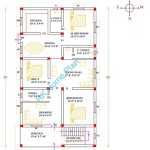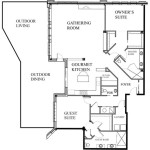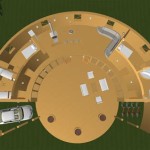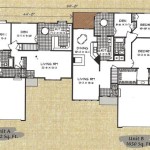Essential Aspects of Drawing Plans for a House
Designing and creating plans for a house is a crucial step in the homebuilding process. It serves as a blueprint that guides construction, ensuring the house meets your specific requirements and preferences. Drawing plans for a house requires meticulous attention to detail and an understanding of fundamental architectural principles. Here are some essential aspects to consider when undertaking this task:
1. Determine Your Needs and Budget:
Before embarking on the drawing process, it is essential to define your needs and budget for the house. Consider the number of bedrooms, bathrooms, and living spaces you require. Determine your desired square footage, general layout, and specific features that align with your lifestyle. Establishing a realistic budget will help guide your design choices and ensure you stay within financial constraints.
2. Site Analysis and Planning:
Evaluate the building site thoroughly, considering factors such as topography, soil conditions, access to utilities, and orientation to the sun. This analysis will inform the placement of the house on the lot and influence the overall design. Proper site planning optimizes space utilization, ensures efficient drainage, and maximizes natural light and ventilation.
3. Space Planning and Layout:
Design the interior layout of the house to create a functional and comfortable living environment. Consider the flow of movement between rooms, the placement of windows and doors for natural light and ventilation, and the overall aesthetic appeal. Zoning the house into private, semi-private, and public areas ensures privacy and facilitates harmonious daily living.
4. Structural Elements and Materials:
Determine the structural system that best suits your house design and building site. Consider factors such as span lengths, load-bearing requirements, and durability. Select appropriate building materials for the exterior and interior finishes, taking into account factors such as climate, maintenance requirements, and aesthetic preferences.
5. Mechanical, Electrical, and Plumbing (MEP) Systems:
Integrate plans for mechanical, electrical, and plumbing systems into the overall design. These systems are essential for the functionality and comfort of the house. Plan for efficient heating, cooling, ventilation, lighting, electrical outlets, and plumbing fixtures. Consider energy efficiency and sustainability measures to minimize operating costs and reduce environmental impact.
6. Architectural Style and Aesthetics:
Choose an architectural style that resonates with your preferences and complements the surroundings. Consider factors such as rooflines, window designs, exterior finishes, and decorative elements. The overall aesthetic should reflect your taste and create a visually appealing home that you will enjoy living in for years to come.
7. Obtaining Permits and Approvals:
Before construction can commence, obtain necessary permits and approvals from local authorities. Submit the house plans for review to ensure compliance with building codes and regulations. This step ensures the safety and habitability of your house.
Drawing plans for a house is a complex and demanding task, but it is also incredibly rewarding. By paying attention to the essential aspects outlined above, you can create a well-designed and functional home that meets your needs and aspirations. Remember to seek professional guidance from an architect or draftsperson to ensure accuracy and adherence to building codes.

Floor Plan Creator And Designer Free Easy App

House Plans How To Design Your Home Plan

Where You Can Buy House Plans Live Home 3d

How To Draw Blueprints For A House With Pictures Wikihow

Easy Home Building Floor Plan Cad Pro

Home Floor Plans House Plan Drawings

House Plan Drawing Everything You Need To Know

House Plans How To Design Your Home Plan

Floor Plan Creator And Designer Free Easy App

Floor Plan House Sketch Stock Vector Ilration Of Building 52483697 Plans








